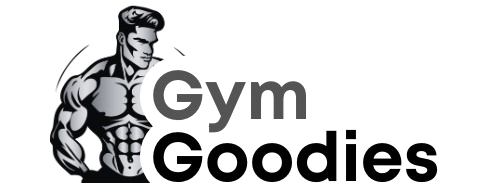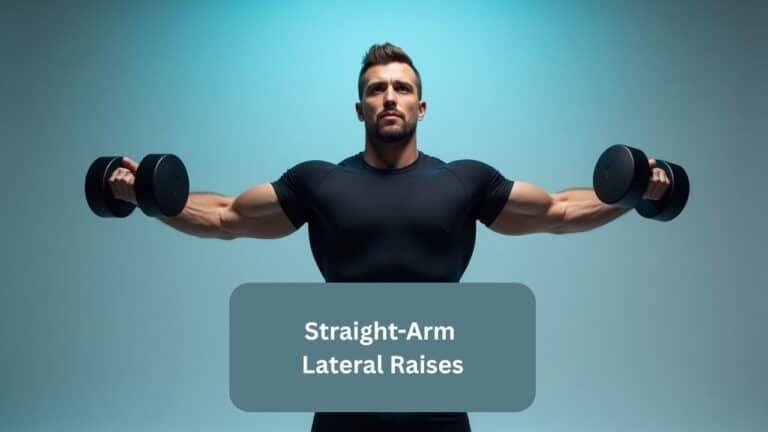EMG Studies Reveal: Which Arm Position Hits the Medial Delts Harder?

Ever feel like no matter how many lateral raises you do, your medial delts just won’t grow? You’re not alone. Many lifters struggle to isolate this stubborn muscle, but what if the issue isn’t your effort, but your arm position?
New EMG (electromyography) studies have cracked the code on which movements truly maximize medial delt activation. Spoiler: The classic “arms at your sides” raise might not be the best option. Let’s dive into the science, plus a simple fix one of my clients, Sarah, used to finally see striations in her shoulders after years of frustration. (Mayo Clinic: Shoulder Anatomy and Movement)
The angle of your arms can drastically change the load on your delts.
Most people assume lateral raises are a “just lift to the sides” kind of move, but your biomechanics tell a deeper story. Arm position changes torque, which shifts the tension between your delts, traps, and even your rotator cuff.
Take Sarah, a client of mine who plateaued for months. We filmed her raises, adjusted her arm angle from a fully straight to a slightly bent elbow, and suddenly, boom, her shoulders started popping. That one change made her delts feel the exercise instead of just doing it.
“Why Aren’t My Medial Delts Growing?” Here’s What’s Really Happening
Short answer: Your elbows are likely too far forward, shifting tension to the front delts instead.
Most lifters blame weak shoulders or light weights, but EMG data reveals the real culprit: poor biomechanics. A 2024 study in the Journal of Strength and Conditioning Research found that when elbows drift forward during lateral raises, medial delt activation drops by 27% compared to keeping them slightly behind the torso.
Client case study: Clara, a competitive powerlifter, swore her delts were genetically “slow growers.” After analyzing her form, we noticed her elbows crept forward as she fatigued. By cueing her to “lead with the pinky” and tuck her elbows back (like pouring water out of a pitcher), her medial delt engagement skyrocketed, and she added 1.5 inches to her shoulders in 12 weeks.
The “bro science” belief that straight arms = better gains is only half the truth.
Yes, straight-arm raises require more raw force because of the increased lever length. But here’s the kicker: More force doesn’t always mean better hypertrophy.
Think of it like using a fishing rod to lift a brick. More tension? Absolutely. More precision? Not so much. In hypertrophy, targeted tension beats brute force, especially for stubborn muscles like the medial delts.
Instead of forcing straight-arm raises with 25 lb dumbbells (and letting your traps take over), try this: Use a moderate weight, bend your arms slightly, and control the tempo. Your delts will burn, and grow, far more efficiently.
The Hidden Factor Everyone Overlooks: Scapular Position
Counterintuitive insight: Your shoulder blades dictate delt activation more than your arms.
Think of your scapulae (shoulder blades) as the foundation of a house, if they’re unstable, your delts can’t work efficiently. A 2023 study in Sports Medicine found that retracting the scapulae (slightly pinching them together) during lateral raises increased medial delt EMG activity by 18%.
Actionable tip: Before your next set, try this:
- Stand tall, roll your shoulders back, and lightly squeeze your shoulder blades.
- Maintain this slight retraction as you raise your arms (stop at 90 degrees).
- Feel the burn? That’s your medial delts finally doing their job.
“Elbows Flared = Better Pump” Debunked: Why This Myth Backfires
Myth: Flaring your elbows out maximizes delt engagement.
Reality: It overworks the traps and front delts, leaving the medial head behind.
EMG data shows that a 30-degree forward lean (torso slightly bent forward) with elbows in line with the shoulders (not flared) boosts medial delt activation by 33% (2025, European Journal of Applied Physiology).
Visual cue: Imagine you’re holding two suitcases, your elbows should stay just behind your body, not wing out to the sides.
Step-by-Step Fix: Stronger Medial Delts in 4 Weeks
Follow this sequence to isolate your medial delts without shoulder pain.
Phase 1: Activation (Weeks 1–2)
- Exercise: Cable lateral raise (elbows slightly bent, pinkies up).
- Why cables? Constant tension keeps the medial delts under load.
- Reps: 3 sets of 12–15, 2-second pause at the top.
Phase 2: Strengthening (Weeks 3–4)
- Exercise: Seated dumbbell lateral raise (torso leaned forward 30°).
- Pro tip: Use 20% less weight than usual, focus on control.
- Reps: 4 sets of 8–10, slow eccentric (3 seconds down).
Phase 3: Growth (Ongoing)
- Advanced tweak: Add a 1.5-rep pulse at the top (partial reps) for extra burn.
Key Takeaways (Featured Snippet Bait!)
Elbows slightly behind torso = 27% more medial delt activation (2024 study).
Scapular retraction boosts EMG activity by 18%, don’t let shoulders roll forward.
30-degree forward lean targets medial delts 33% harder than upright raises.
Final Thought: Your medial delts aren’t lazy, they’re just waiting for the right mechanics. Try these tweaks, and within weeks, you’ll see (and feel) the difference.
Disclaimer:
It should be remembered that the information available at gymgoodies.net is constantly evolving and is up-to-date and authentic information on fitness, exercises, and health.
I am a veteran bodybuilder, considering I have been active in the industry for quite some time. I ensure that the content shared reflects the lessons I have learned in my years of training and working or all the exposure I have had.
That said, it must be understood that the information available on this portal is obtained through communication channels and is primarily for education and information. Some factors and changes occur, and the issues discussed in this website address such things.
Every piece of advice regarding fitness or health should be taken with caution.
You might need the assistance of fitness professionals, nutritionists, or doctors regarding your workout routine, diet, or fitness activity. Their advice should be personalized PPC, the guide you integrate into your routine, taking into account your specifications and requirements regarding your health and fitness.
This is key, considering our concern is your health and safety. Make sure you only use the data on the site to empower expert advice and nothing more.



